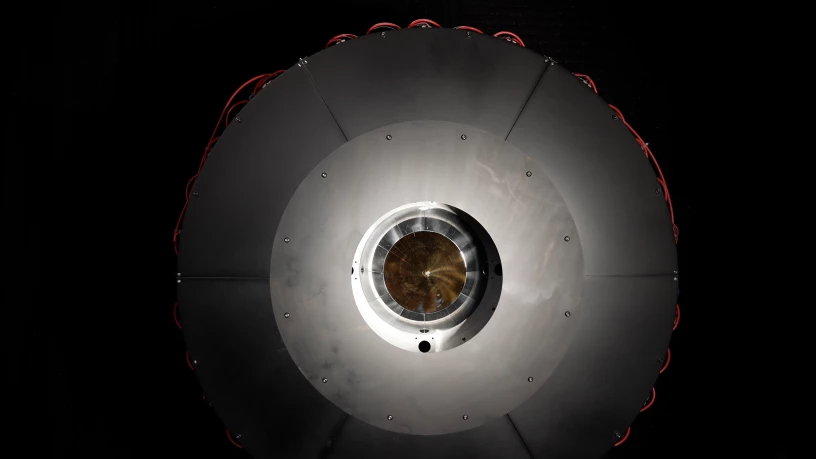Looking forward to a future where laser beams replace power lines, DAPRA’s Persistent Optical Wireless Energy Relay (POWER) program has set new records for transmitting more power wirelessly over longer distances.
When it comes to military and humanitarian operations, obtaining a steady, reliable source of power is of paramount importance and this has only increased over time. As a result, the world’s major military forces invest a staggering portion of their budgets to supply electricity, fuel, power plants, and all that goes with them as part of an increasingly complex supply line.
However, no matter how much power technology improves, there’s still the ever-present problem of getting that power from Point A to Point B – a problem that is often insurmountable across the infamous last mile where power lines cannot be slung or pipelines buried and soldiers are often reduced to hauling jerry cans of fuel over rough country by hand and back muscle.

DARPA
To close this gap, DARPA’s POWER program seeks to build transmission lines of light where laser beams carry power to where it is required as easily as we now send data through the air.
It’s an effort that appears to be paying off with the recent tests in New Mexico setting new records. Previously, the POWER system managed to use a laser to beam 230 watts across one mile (1.7 km) for 25 seconds, and an undisclosed lesser amount of power as far as 2.3 miles (3.7 km). Now, DARPA has managed to increase this to 800 watts for 30 seconds at a distance of 5.3 miles (8.6 km).
Not bad for sending power near-instantaneously without wires.

DARPA
The system is built around what is called the Power Receiver Array Demo (PRAD), which is a ball-like structure that has a compact aperture to allow a laser beam to enter. This beam strikes a parabolic mirror that scatters the light and shines it on an array of dozens of photovoltaic calls. These convert the laser light back into electricity.
At the moment, DARA is concentrating on power and distance, so the present efficiency of the system being a mere 20% is acceptable, though there are plans to improve this as the technology is scaled up.
Both the emitter and the receptor were situated on the ground for the test. However, the ultimate goal is to turn these into relays mounted on drones flying at high altitudes to direct the power where needed. By sending the beams up above the thickest parts of the atmosphere, losses can be cut down and obstacles like buildings, aircraft, and birds avoided.
Currently in Phase One of a three-phase development effort, the program is working on how to most accurately and efficiently direct power, correcting the beam wavefront to maintain quality, making the system throttleable, and reduce conversion losses across the relays. By Phase Three, the goal will be to install the relays in conventional aircraft that will be able to deliver 10 kW of optical energy across 125 miles (200 km).
“This demonstration broke through misconceptions about the limits of power beaming technology, and it is already spurring industry to reimagine what’s possible,” said POWER Program Manager Paul Jaffe.
Source: DARPA








